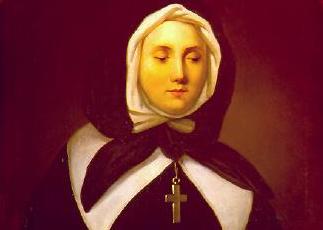St. Marguerite Bourgeoys was born on Good Friday, in 1620, during a time of colonial expansion and religious strife in Europe. She was the seventh of 13 children in a middle class household. Her father was a candlemaker. She grew up in the northeastern province of Champagne, France.
Marguerite described herself as “very light-hearted and well-liked by the other girls” as a young woman. In 1640, she felt God calling her not long after her mother’s death.
On Oct. 7, during a procession honoring Our Lady of the Rosary, Marguerite had a mystical experience involving a statue of the Virgin Mary at Notre-Dame Abbey. She recalled the incident: “We passed again in front of the portal of Notre-Dame, where there was a stone image above the door. When I looked up and saw it I thought it was very beautiful, and at the same time I found myself so touched and so changed that I no longer knew myself, and on my return to the house everybody noticed the change.”
Although she believed she had been called to religious life, her applications to the Carmelites and Poor Clares were unsuccessful. In 1654, the governor of the French settlement in Canada visited his sister, an Augustinian canoness. Marguerite belonged to a sodality connected to that convent, and the governor invited her to come to Canada to start a school in Ville-Marie. When she arrived, the colony had 200 people, a hospital, and a Jesuit mission chapel.
After she started a school, she recruited a friend and two other young women. In 1667, they added classes for Indian children. They brought in more young women a few years later, establishing the Congregation of Notre Dame in 1676.
When Marguerite was 69, she walked from Montreal to Quebec when the bishop asked her to establish a community of her sisters there.
At the time of her death, Marguerite was known as the “Mother of the Colony.” She was canonized in 1982.

